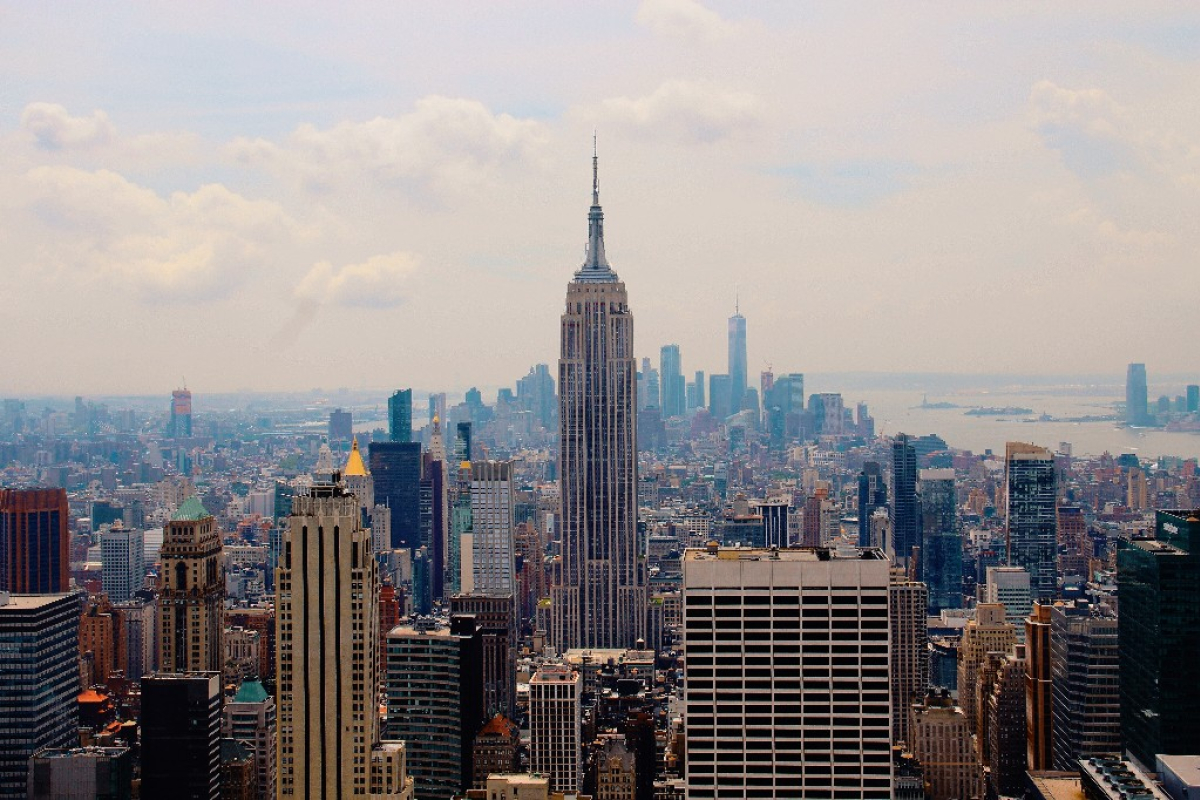New York City Hall is tackling polluting skyscrapers (Photo Credit: John Fornander – Unsplash)
–
IN IMAGES – One month after the “Climate Mobilization Act”, the city of New York is pursuing its ambition to reduce the pollution of its iconic skyscrapers, which still consume a lot of energy and pollute.
Historical cradle of skyscrapers flirting with the horizon, New York now has a clear ambition to drastically reduce their energy consumption and greenhouse gas emissions. These huge buildings, all clad in glass, are covered by the “Climate Mobilization Act” ratified at the end of April by the town hall of the Big Apple. As part of this commitment, the metropolis aims to improve its energy balance and reduce its emissions by 80% by 2050.
Mayor Bill de Blasio, elected Democrat at the head of the metropolis since 2014, intends to force buildings over 2,300 m² – around 50,000 buildings representing a third of New York’s emissions – to reduce their emissions by 40% by 2030 compared to their 2005 level.
Erected at the end of the 19th century in “the city that never sleeps”, the skyscrapers have greatly modified its skyline. The One World Trade Center, the Empire State Building, the Chrysler Building … compete in height and fame. These skyscrapers are characteristic of glass facades glistening in the sun, abundant lights, air conditioning, generous heating or air conditioning, elevators by the dozen, etc. As much energy consumed and greenhouse gases produced.
A major revolution for the real estate market
By attacking its very dense housing stock, New York has adopted a “revolutionary” law according to Nilda Mesa, director of the sustainable development program at Columbia University. “It will have many positive effects, such as creating a market and demand for energy efficiency technologies”, which could be modeled in other American and European cities, she explains.
For these immense glass towers, an energy transformation is economically profitable in the long term, assures Jacob Corvidae, expert in energy consumption of buildings for the environmental organization Rocky Mountain Institute. He explains that one of the ways to cushion the shock is to benefit from a major renovation, which turns out to be unavoidable after 35-40 years and makes the cost of the work relatively “marginal”.
The standoff with the owners
Although it provides for long-term loan facilities guaranteed by the town hall, the text has been fiercely opposed by the powerful real estate sector. In question: the astronomical sum of 4 billion dollars of renovations which are to be envisaged. Despite resistance from owners, Ms. Mesa is convinced that the market will adapt to the new text. “Competition is strong in New York, buildings want to be able to boast” of being well managed, she said. “We are still at the beginning, there are a lot of fears. But in 5-10 years, it will all be commonplace ”.
The “green lease” is another amortization solution, whereby owners and tenants share the energy savings achieved. Today, most New York homeowners factor the cost of energy into the price of rent, depriving their tenants of visibility into actual spending.
The Empire State Building, pioneer and avant-garde
Some buildings have already made considerable efforts, such as the Empire State Building, underlines Nilda Mesa. The legendary New York skyscraper, an art deco jewel completed in 1931 and 381 meters high, launched in 2009 a vast renovation program of 550 million dollars. This has already enabled it to reduce its energy consumption by more than 40%, explains Anthony Malkin, president of Empire State Realty Trust, the owner of the building.
More than 6,500 windows, three million light bulbs, 67 elevators have been replaced or renovated to improve thermal insulation and reduce the building’s electricity consumption, even as its occupancy density increased sharply. The skyscraper is also equipped with an ultra-modern energy management system, constantly optimizing consumption as needed.
Experts recognize, however, that reducing emissions is easier in a tower like the Empire State, than in the glass-fronted skyscrapers that have proliferated since the 1970s. Trump Tower, a 58-story tower erected by Donald Trump on 5th Avenue in 1984 is one of the most energy-consuming buildings in the city, according to the environmental association Align.
Bill de Blasio, the 2020 presidential candidate and clearly opposed to Trump, notably threatened her with more than $ 500,000 in annual fines when the law comes into force. However, it is not known whether the Trump Organization, the holding company of the US president, has planned work to improve its energy balance.
– .


